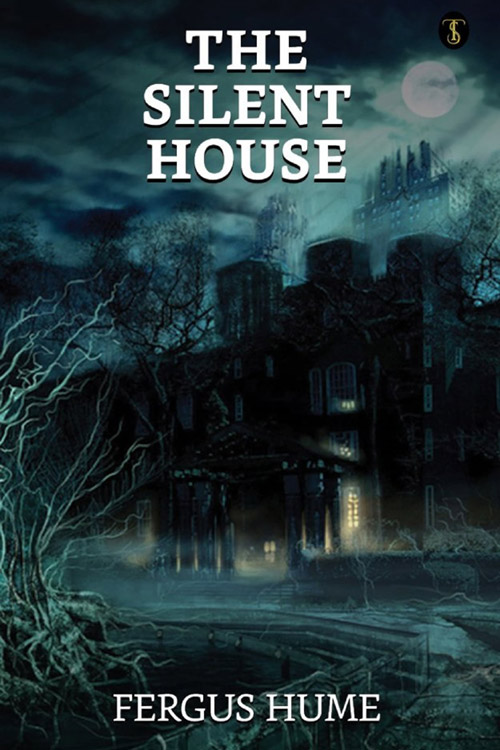
The Silent House
With one exception, Geneva Square was a pattern that was all desirable in terms of cleanliness and order. One might hope to find such a haven in some somnolent cathedral town but scarcely in London’s grimy, smoky, restless metropolis.
The exception to the notable spotlessness of the neighbourhood was No. 13, a house in the centre of the side opposite the entrance. Its windows were dusty and without blinds or curtains, there were no flower boxes on the ledges, the steps lacked whitewash, and the iron railings looked rusty for want of paint. Stray straws and scraps of paper found their way down the area, where the cracked pavement was damp with green slime. Such beggars occasionally wandered into the square, to the scandal of its inhabitants, camped on the doorstep, and the very door presented a battered, dissolute appearance.
Yet, for all its ill looks and disreputable suggestions, those who dwelt in Geneva Square would not have seen it furbished up and occupied for any money. They spoke about it in whispers, with ostentatious tremblings and daunted looks, for No. 13 was supposed to be haunted and had been empty for over twenty years. Because of its legend, loneliness, and grim appearance, it was known as the Silent House and formed quite a feature of the place. Murder had been done long ago in one of its empty, dusty rooms, and it was since then that the victim walked. Lights, said the ghost-seers, had been seen flitting from window to window, groans were sometimes heard, and the apparition of a little old woman in brocaded silk and high-heeled shoes appeared on occasions. Hence, the Silent House bore an uncanny reputation.
It is impossible to say how much truth there was in these stories, but sure enough, despite a low rental, no tenant would take No. 13 and face its ghostly terrors. House and apparition and legend had become quite a tradition when the whole fantasy was ended in the summer of ’95 by the unexpected occupation of the mansion. Mr Mark Berwin, a gentleman of mature age who came from nobody knew where, rented No. 13 and established himself therein to lead a strange and lonely life.
At first, the gossips, strong in ghostly tradition, declared that the new tenant would not remain a week in the house, but as the week extended into six months, and Mr Berwin showed no signs of leaving, they left off speaking of the ghost and took to discussing the man himself. Many stories were told about the newcomer and his strange ways in a short time.
Read or download Book
Fergus Hume
Ferguson Wright Hume (8 July 1859 – 12 July 1932), known as Fergus Hume, was a prolific English novelist known for his detective fiction, thrillers, and mysteries.
Biography.
Hume was born in Powick, Worcestershire, England, the second son of James C. Hume, a Scot and clerk and steward at the County Pauper and Lunatic Asylum there. When he was three, the family emigrated to Dunedin, New Zealand, where he was educated at Otago Boys’ High School and studied law at the University of Otago. He was admitted to the New Zealand bar in 1885. Shortly after graduation, Hume relocated to Melbourne, Australia, where he became a barrister’s clerk. He began writing plays but found it impossible to persuade the managers of Melbourne theatres to accept or even to read them.
Rise to fame
Hume first came to attention after a play he had written, entitled The Bigamist, was stolen by a rogue called Calthorpe and presented by him as his work under the title The Mormon. Finding that the novels of Émile Gaboriau were then prevalent in Melbourne, Hume obtained and read a set of them and determined to write a novel of the same kind. The result was The Mystery of a Hansom Cab, set in Melbourne, with descriptions of poor urban life based on his knowledge of Little Bourke Street. It was self-published in 1886 and became a great success. He reaped little of the potential financial benefit because he sold the British and American rights for 50 pounds. It became the best-selling mystery novel of the Victorian era; in 1990, John Sutherland called it the “most sensationally popular crime and detective novel of the century”. This novel inspired Arthur Conan Doyle to write A Study in Scarlet, which introduced the fictional consulting detective Sherlock Holmes. Doyle remarked, “Hansom Cab was a slight tale, mostly sold by ‘puffing’.”
After the success of his first novel and another publication, Professor Brankel’s Secret (c. 1886), Hume returned to England in 1888.[3] His third novel, Madame Midas, was based on the life of mine and newspaper owner Alice Ann Cornwell. After this book became a play, [a] her estranged husband, John Whiteman, sued over its content.
Personal life
Hume settled back in England, first in London, but after a few years in Thundersley, Essex, at Church Cottage, probably at the invitation of the Reverend Thomas Noon Talfourd Major. Hume lived in Thundersley for thirty years, publishing more than 130 novels, plus several collections – most of them mystery stories, though he never recaptured the success of his first novel. He also wrote lyrics to songs composed by his brother-in-law, Charles Willeby, and book reviews for literary journals, including The Bookman.
The 1911 census lists him as ‘author’, aged 51, and living at Church Cottage, Thundersley, comprising six rooms. He had a housekeeper, Ada Louise Peck, a widow of 69. He regularly travelled to Italy, France, Switzerland, and other European countries.
When the Rev Talfourd Major died in 1915, Hume had to leave Church Cottage. He moved to ‘Rosemary Cottage’, 34 Grandview Road, Thundersley, where he lived with John Joseph Melville and his wife. Melville was a metallurgical chemist by profession with a particular study of alchemy.
Hume was reputed to be deeply religious, intensely private, and known to avoid publicity. In his later years, he lectured at young people’s clubs and debating societies. He died at Thundersley on 12 July 1932 and lies in an unmarked grave next to an actress and the Rev Maley. All he left in his will were small items, like a horse blanket and a pipe. His estate was valued at £201.






